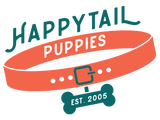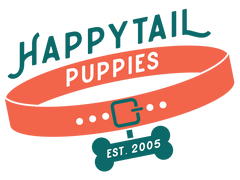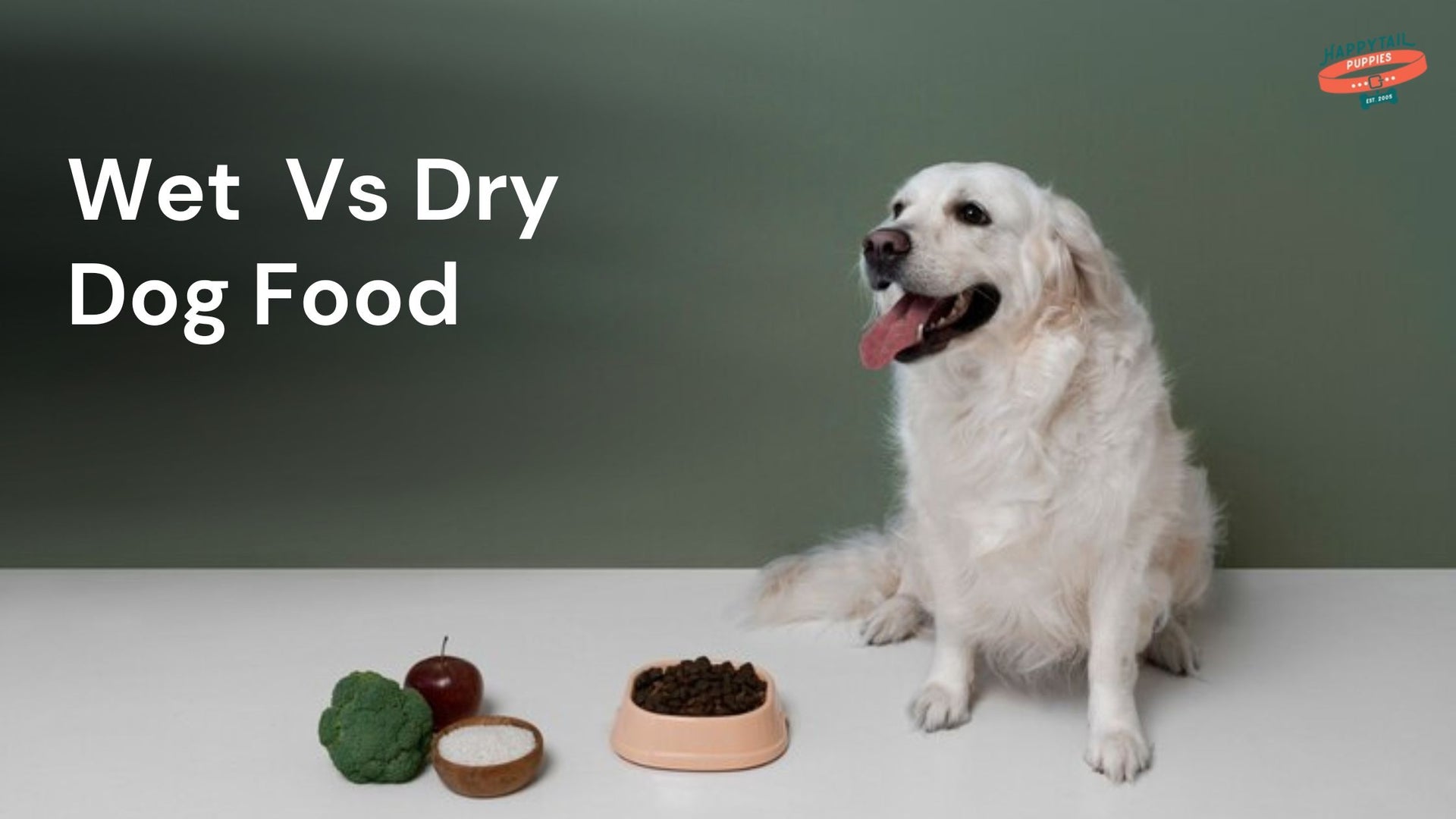Difference Between Wet & Dry Dog Food
Even for experienced dog owners, selecting between wet and dry dog food is often an overwhelming choice. While the market is flooded with varieties of dog food, the options marketplaces offer dog owners might need to be clarified. In the end, landing on the decision should rely typically on the personal choices of your dog that meet their needs. Their weight, age, dental health, and breed might play a pivotal part in your choice of dog food. In our blog, we will aim to discuss the real difference between wet and dry food, although you can also get a professional insight into what suits your dog the best!
What Is Wet Dog Food?
One form of meal that is perfect for the dogs and most loved ones is wet food. The gravy can be made out of chicken, add a touch of lamb flavor or even made out of chunks of liver. It has high moisture content and is made from premium-grade ingredients like grain, veggies, chicken, as well as lamb. There are some trusted brands online that make them in single-use pouches that hold the nutritional values together. Since the rate of moisture is higher than 70%, it has to be finished in a single feed and should only be stored for a short time.
What Is Dry Dog Food?
It is the exact opposite of what wet dog food offers. Dry food, often termed kibble and dog biscuits, contains around 3-12% water. Kibbles are typically small brown pellets in bigger bags. These pellets are formed out of veggies, grains, or any other source of meat. They generally last longer as they arrive in resealable bags or boxes.
Wet Food Vs. Dry Food
It is essential to weigh the pros and cons of wet and dry dog food. A pet owner's decision should depend on their dog’s lifestyle, breed, and needs so that the dog gets a well-balanced diet.
Nutritional Value: Wet vs. Dry Food
Both wet and dry dog food are rich in nutrients that will benefit your dog; nonetheless, how such nutrients are presented varies.
Wet Dog Food: Wet food is moist and, therefore, the best source of water, especially for animals that hardly drink water in certain breeds. Because the wet food consists of high water content, it is satisfying which is a plus in the quest of achieving the right weight in dogs. Miniature Dachshund or Pomeranian, for instance, will have trouble chewing; consequently, wet food is soft on the teeth and easily digestible, particularly if he’s suffering from gum or stomach problems. Like wet food, it contains a lot of protein and fats even though it contains lower energy density than dry food. Wet food is a tempting proposition for the Toy Poodles or Maltese, as well as many other picky dogs.
Dry Dog Food: Kibble or dry food contains about 10% moisture, which makes it significantly denser in terms of calories than moistened food. It is a good factor to consider for the small breeds that need more energy through their diet added by the author. Dry food also provides a ration that is composed of protein, fat, carbohydrates, and fiber. The presence of high fiber in a few kibble foods can improve digestion and also improve stool quality. Also, the dry food texture makes the dog’s teeth strong since the dry food can minimize oral health complications. The health of teeth in dogs is critical, especially to breeds such as the Shih Tzus or the Yorkshire Terrier, and kibble has been rather effective in that.
Digestibility and Hydration Needs
There is a clear-cut difference between wet and dry food in that one is likely to affect the dog’s digestion system differently. Also, the former's wet consistency is likely to affect the dog’s water intake.
Wet Dog Food: Wet food is also ideal for the digestion of the dog because of its moisture content. Some of the breed has small stomachs, including Cavalier King Charles Spaniel and French Bulldog, and the wet food is good for its stomach. A little more moisture content is also for the benefit of the dogs, particularly those suffering from urinary-related problems because it promotes better hydration and diluted urine. Small dogs such as Chihuahuas are likely to drink minimal water; hence, they develop kidney diseases or become dehydrated. Others get some extra moisture through their meals since wet food is served.

Dry Dog Food: But for the former, you have to feed the cat more often with water to ensure the maximum level of hydration for the dry food. If your dog rarely drinks water, it is wiser to turn to something else instead of dry food, especially for those vulnerable breeds, including Miniature Dachshunds. On this basis, the texture of the dry food also helps to slow down the fast eater, particularly as they will have to chew on it for some time. Miniature Schnauzer, for instance, tends to overeat food and then chew it in a hasty manner that causes vomiting and diarrhea. And therefore, as it is observed, dry food makes the dogs eat slowly and digest properly.
Check This Out : Maltese Haircuts You Can Consider
Dental Health Considerations
Dental health is yet another vital attribute to a dog's well-being, specifically for small dog breeds prone to dental health issues.
Wet Dog Food: Wet food is often soft and does not require much chewing. It does even less to help with dental health. Regular consumption of wet food without caring for the teeth often leads to gum diseases and plaque buildup, mainly in small dog breeds like Bichon Frise or Shih Tzu, which are often prone to dental issues.
Dry Dog Food: Dry dog food is a bit on the abrasive side but can help in scraping off the plaque and reducing the risk of the buildup of tartar. Maintaining oral health is a notable benefit, specifically for small breeds like Maltese or Toy Poodle. But, taking just dry food is different from regular dental care that includes professional cleanings or brushing. For the toy breeds, maintaining dental health is important since they are often prone to the loss of tooth or gum diseases. Using dry food can help in supporting the dental care of dogs; however, it should be coupled with regular brushing for better results.
Flavor and Palatability
For the dogs who are picky eaters, the feeding time becomes challenging. Choosing between wet and dry food can affect how much they enjoy their meal times.
Wet Dog Food: Wet foods for dogs are often rich in flavor and aromas, making them the perfect option for picky eaters. Small dog breeds like the Pomeranians and Shih Tzu are picky eaters, and wet food is alluring for them. The rich taste and soft texture encourage the dogs to eat more food, mainly if they have a reduced appetite due to their age or illness.
Dry Dog Food: Dry dog food is often appealing considering its texture and taste; however, dogs would love it mainly when the kibble is specifically formulated to meet their size and dog breed. A few of the dog food brands offer flavor varieties that make their food palatable, which helps them get excited about their food. Small dog breeds like Yorkshire Terriers or Chihuahuas select high-quality kibbles that are flavorful, making them a real delicacy for their dogs.
Cost and Convenience
Considering the convenience and cost involved, dry food typically offers more benefits than wet food, mainly for dog owners with hectic lifestyles.
Wet Dog Food: Generally, wet food is expensive for every serving when compared to dog food. For the small dog breeds, it is less issue as the needs here are of small portions. The wet food comes with a short shelf life once it gets opened. Also, it should be stored in the refrigerator to prevent food spoilage. But, when small dog breeds have their distinctive dietary needs or choices, the cost is often justified by the perks of the wet food. This food adds to the convenience of administering the medications since the pills can be hidden in the soft texture of the wet food.
Dry Dog Food: Dry food for dogs is the most affordable option as they come in bigger quantities, making it a budget-friendly option for dog owners. These foods come with a high shelf life and never need any refrigeration. It is the added benefit that is highly convenient. Especially for the small dog breeds who might get fed infrequently, dry food forms the practical option for regular feeding. Furthermore, dry food is often used in the automated feeders, making it the ideal option for pet owners who are not always at home to serve meals. For small dog breeds that need small portions throughout the day, dry food is an efficient and time-saving option.
Final Thoughts
The perfect food option for your dog relies on the needs of the dog. Both wet and dry dog food have their own set of pros and cons. If your dog is a fussy eater or has distinctive dietary needs or grapples to remain hydrated, then wet food is the ideal option. Alternatively, if you are in search of an affordable option that is convenient to store and aids in promoting dental health, then dry food is the best. Ensure to consult with a vet prior to finalizing the diet of your dog. They offer the best recommendations considering the type, age, size, or general health condition of your dog. The main aspect here is to ensure that your pet is getting a healthier diet.


